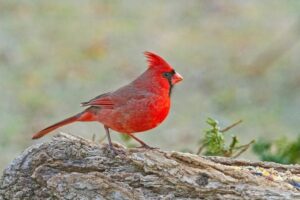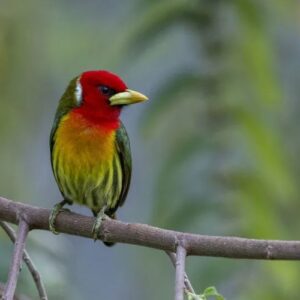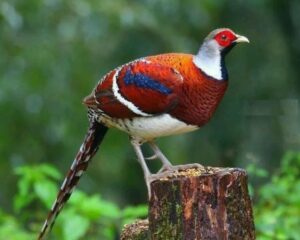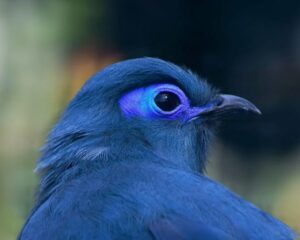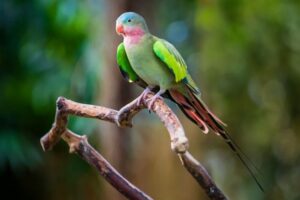Often, people will admire an animal and decide they want to keep it as a pet. Many times, this is not an ideal situation for the animal. This happens frequently with birds. Because they are beautiful and fascinating, birds are often trapped for sale in the exotic pet trade.
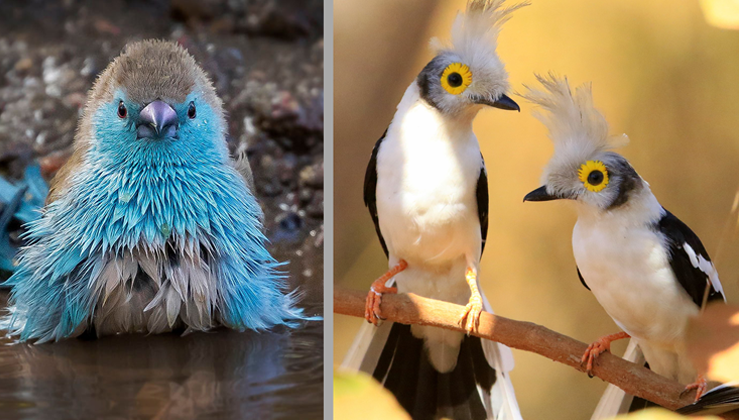
This causes problems not only for the bird species itself but also disrupts the ecosystem from which the birds come. It is estimated that only 1 in 6 of the parrots captured in the wild for the pet trade survive the process. The same is true for other species. That being said, some people work to breed and protect endangered species of birds. They release them back into the wild to restore decimated populations or help introduce them to new environments where they can thrive.
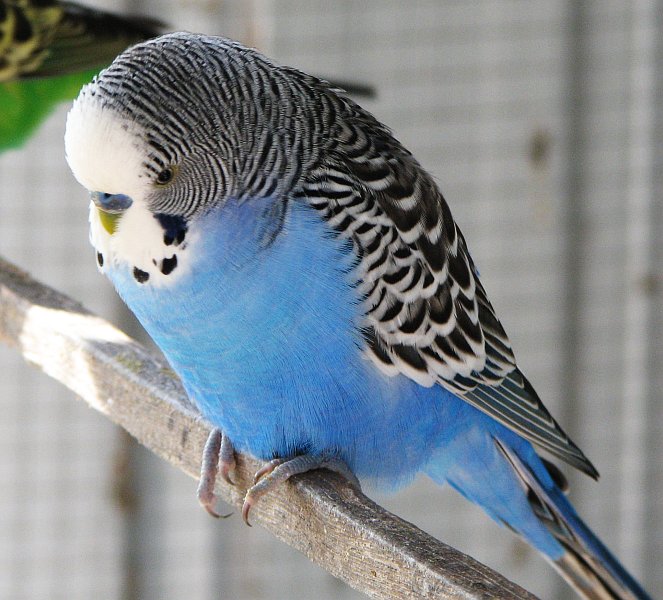
Budgerigar: The violet budgerigar mutation is one of approximately 30 mutations affecting the colour of budgerigars. It is one of the constituent mutations of the violet variety. The violet factor produces a visual effect in any bird which carries it. The effect depends on whether the violet factor is single or double and whether the dark and blue mutations are present. In total there are 18 visually different combinations of these three mutations. However, only three of these approximate to the colour specified by the visual violet exhibition standard. Budgerigars, or budgies, are sometimes referred to as parakeets. They are some of the most popular pet bird species since they are easy to tame and care for. They are known for being affectionate and friendly. Plus, they’re small and low-maintenance, making them good options for busy pet owners as well as those who live in more cramped living environments, such as apartments. Budgies can easily be trained, as they can easily talk and perform other tricks.
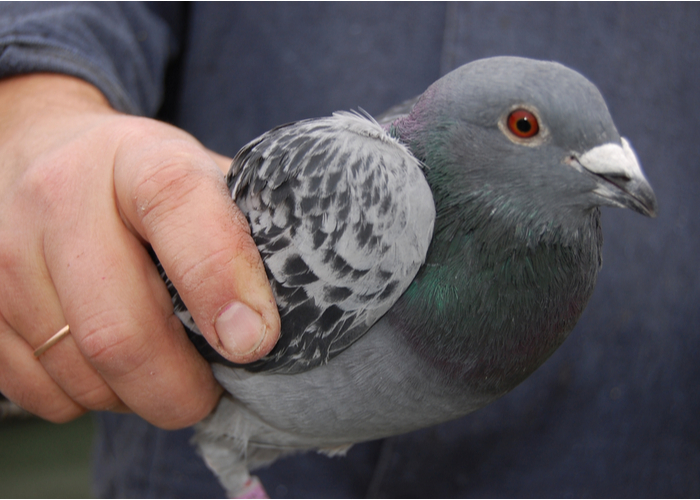
Dove: The dove might not be the first bird that comes to mind when you’re searching for the friendliest pet bird species, but rest assured – doves are easy to domesticate and are known for being quite gentle and sweet. Doves rarely bite or show any aggression. You should find it easy to train your doves, too. They enjoy attention from their owners but don’t require as much attention as other bird species do.
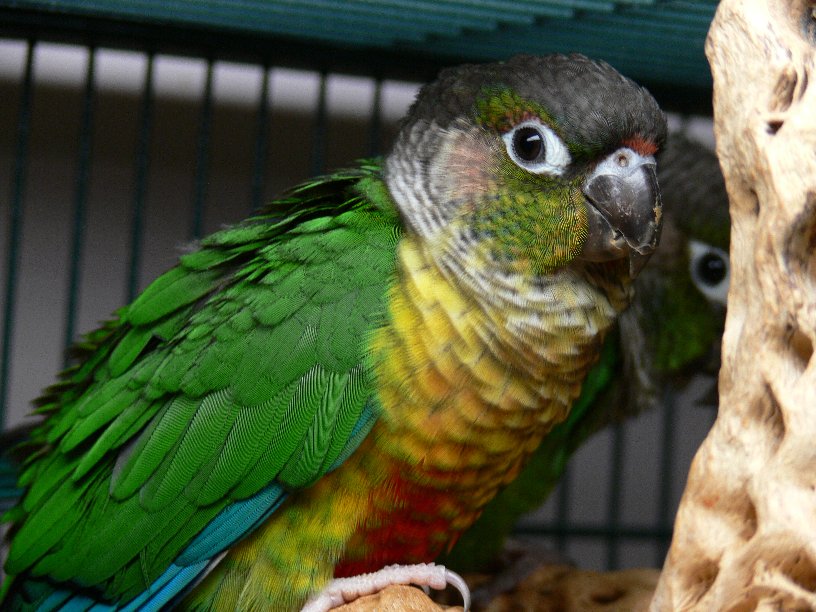
Green-Cheeked Conure: Conures of all kinds are known for being friendly and easy to handle. However, green-cheeked conures, native to South America, are some of the most social. These Birds are curious, playful, intelligent, and – we’ll say it! – downright mischievous at times. However, they are also easygoing and love affection from their owners. Typically, they don’t learn to talk, though the ear occasional exceptions. That said, they offer endless charm and appeal, making them perfect companions for owners who are looking for friendly pet bird species.
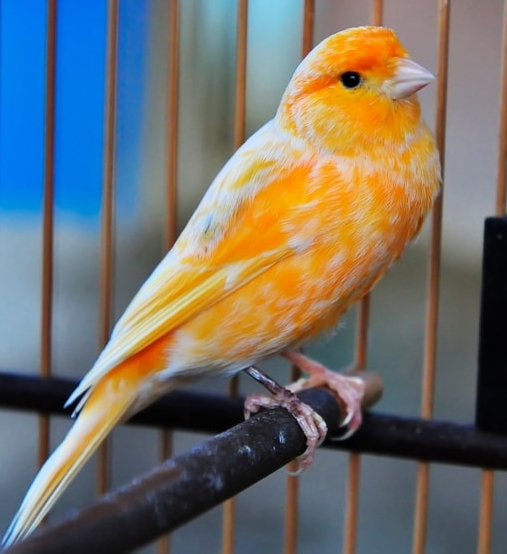
Canaries: You will want to get a cage that’s at least 2 to 3 feet tall so your Canary has room to fly. Set up your purchase is at different heights and put a couple of water bowls( one for drinking and another a larger, shallower one for bathing) and food bowls in the cage. You can give your Canary commercial pellets and vegetables like Kale , spinach and sweet potatoes to supplement. Cal don’t need feathered companions and they are not the squiggliest of birds. Still, most outgoing canaries like being in the same room as their humans and being talked to.

Hyacinth Macaw: Hyacinth macaws are some of the most beautiful – as well as the largest! – birds you can raise. They are sociable and fun-loving – there’s nothing a macaw loves more than cuddling with its owners. Though, they are huge, tipping the scales at 42-51 ounces and more than 40 inches in length. Therefore, you will need to make sure you have the space to provide enough leg (and wing!) room for these birds. That said, if you can provide enough space, you’ll be handsomely rewarded. These feathered giants are some of the friendliest birds around.
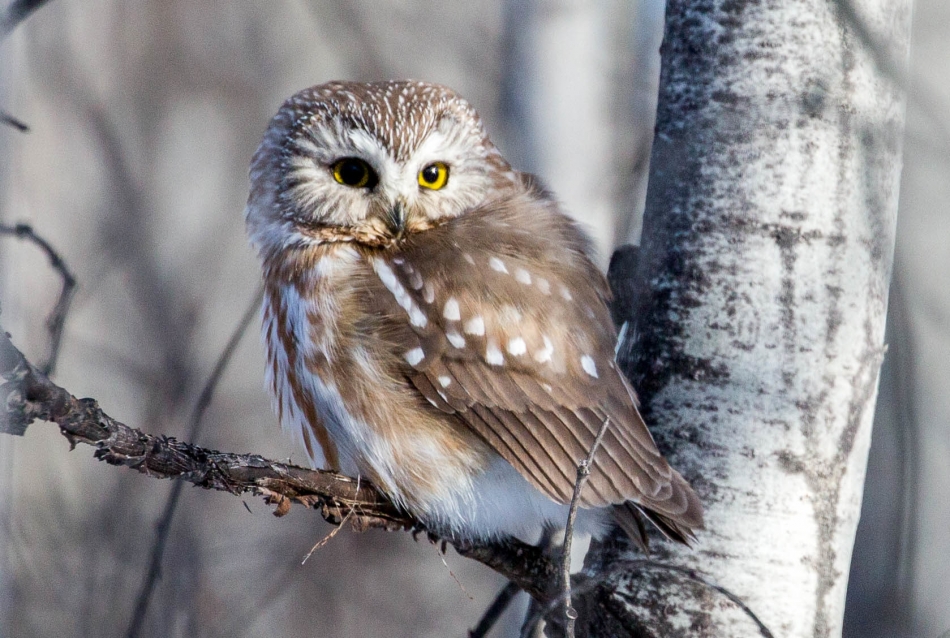
Owls: Owls might not be the first birds you put on your list when you’re deciding what kind of pet birds you want to raise! However, they should be at the top of your list after reading this article. It can be tough to find owls in many places, but you should jump at the opportunity to raise them if you do. These big-eyed birds are good-natured and loyal, with most people who raise owls having rehabilitation licenses that allow them to raise reduced injured owls. Owls are loving and friendly, especially if you have the patience necessary to regularly interact with your owl and train it to your presence. Barn owls and snowy owls are some of your best options in this regard.
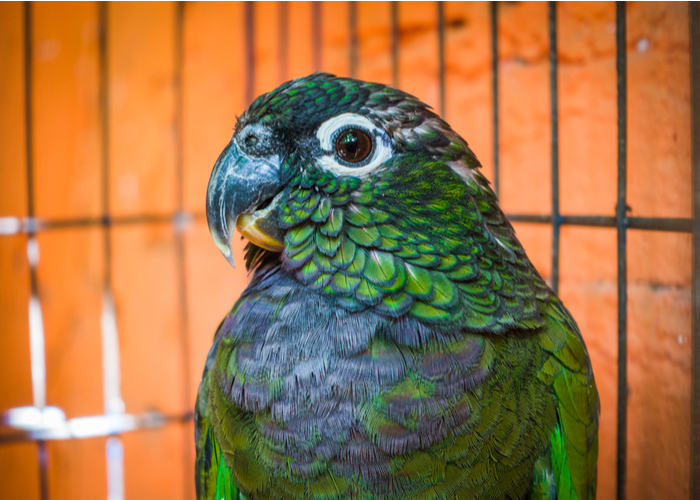
Hahn’s Macaw, Besides Being Beautiful It’s Considered One Of The Friendliest Pet Birds. There are many reasons to own macaws – one of the best is how beautiful these birds are. However, lots of pet owners steer clear of macaws due to their size. The good news is that Hahn’s macaws tend to be a lot smaller than other options. They are only about 12 to 14 inches long yet manage to pack a ton of persona into one pint-sized package. As intelligent, playful birds, Hahn’s macaws are gentle when they are socialized and handled regularly. The more time you can spend interacting with your pet, the better – if they don’t get enough social activity, they can easily become depressed. They can also be incredibly noisy.
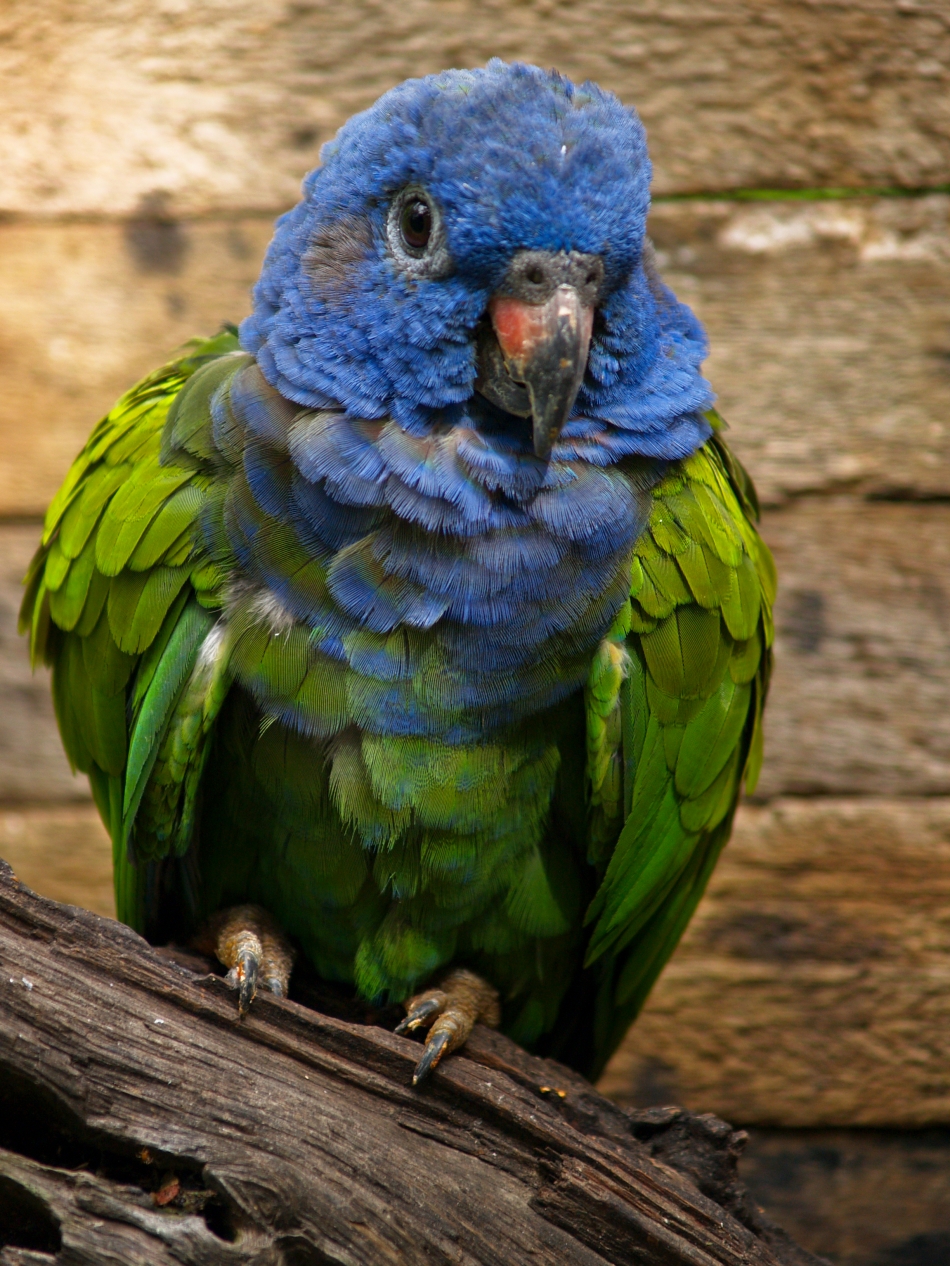
Pionus Is One Of The Friendliest Pet Birds To Everyone. The Pionus parrot is one of the best pet birds you can raise if you are looking for a long-term commitment. These birds can live up to 40 years – much longer than the lifespan of the average family dog, we might add. Pionus parrots generally grow to around 10 inches long and enjoy playing. They won’t become overly attached to a single person in your household but will instead bond with everyone, great detail to note if you have a family with multiple members.
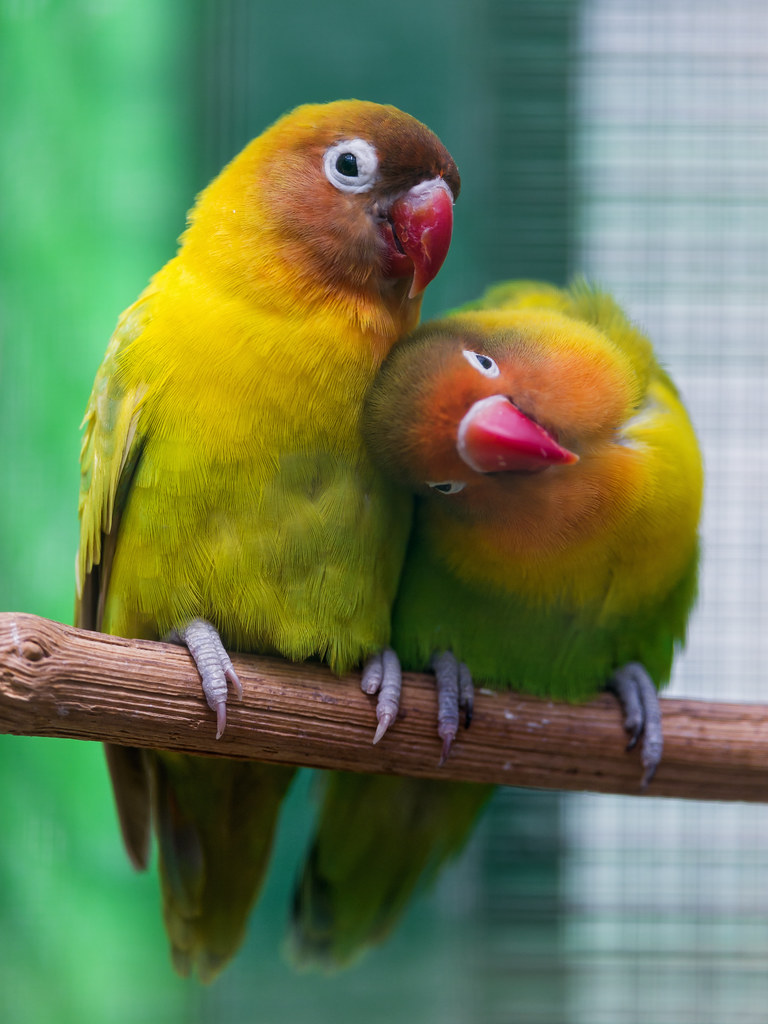
Lovebird: It’s In The Name of This Friendliest Pet Bird, The Lovebird As the name alone suggests, you’re sure to get a lot of love out of your pet lovebird! Lovebirds are friendly and easily form bonds with their owners and other companions – regardless of whether those companions are feathered or not. Lovebirds have beautiful feathers and also are easy to care for. Just keep in mind that you will want to give them a bowl of water to bathe in a few times a week. This will help them keep those feathers neat and tidy and provide the opportunity for a bit of playtime.
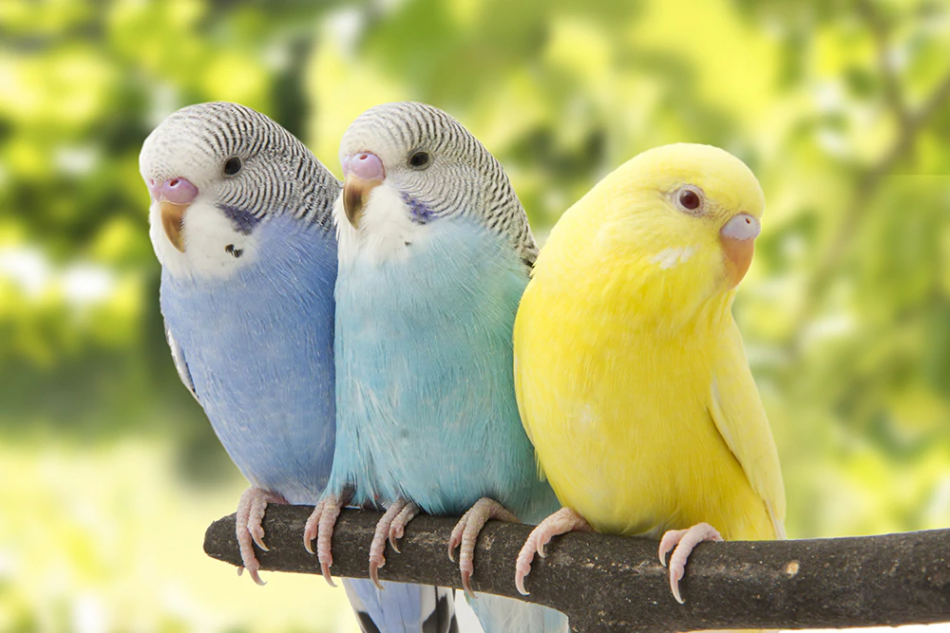
Parakeet: Many people know them as “parakeets,” but their real name is “budgerigar”. The word “budgerigar” comes from the aboriginal people of Australia, the budgie homeland. We like to use “budgie” as a shortened version of “budgerigar”. In English, “budgerigar” or “budgie” is a more accurate name, because “parakeet” actually refers to a large group of small to medium sized parrot species. Parakeets are flock creatures, and part of their care is providing social activities. If their human family members are home a lot, able to hand tame the bird, and give it lots of interaction time, then they will become its flock. Parakeets can form strong bonds to their human flock mates. If they will be gone a lot, then the parakeet should be kept in an environment with other parakeets. The human/bird bond may not be as strong but it is healthier for the birds overall. Without a companion the bird may suffer from depression and other mental health problems.
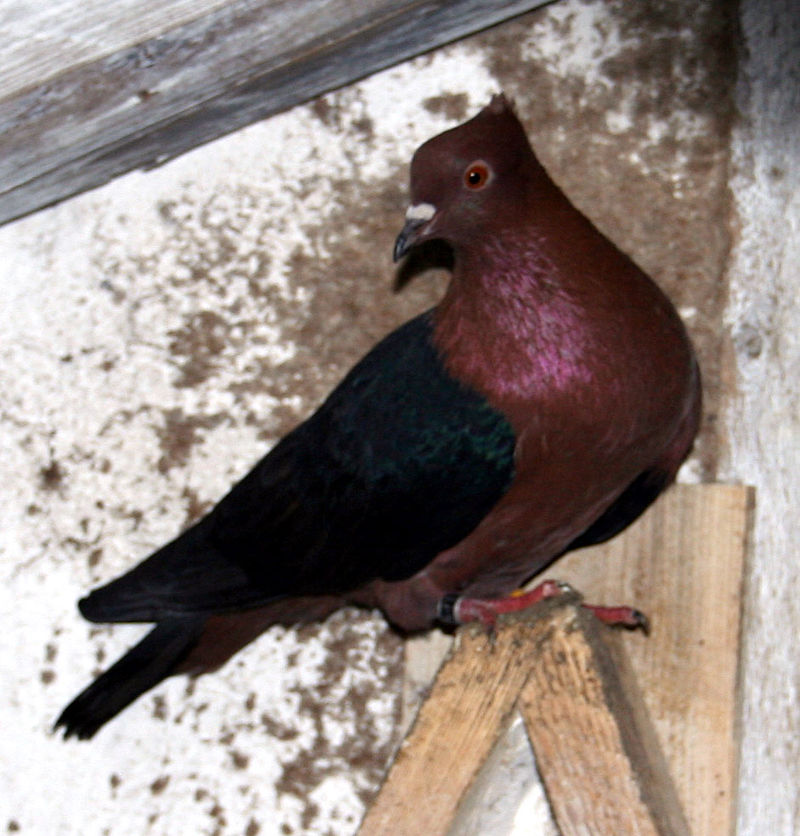
Archangel Pigeon: The archangel pigeon has been selectively bred to produce its unusual coloring. They have bronze or gold bodies with a metallic sheen to the feathers. Their wings are black, white, or blue and they have bright orange eyes. This breed has specifically been bred as a domestic bird and can’t survive in the wild. They are primarily used in shows and as ornamental pet birds.
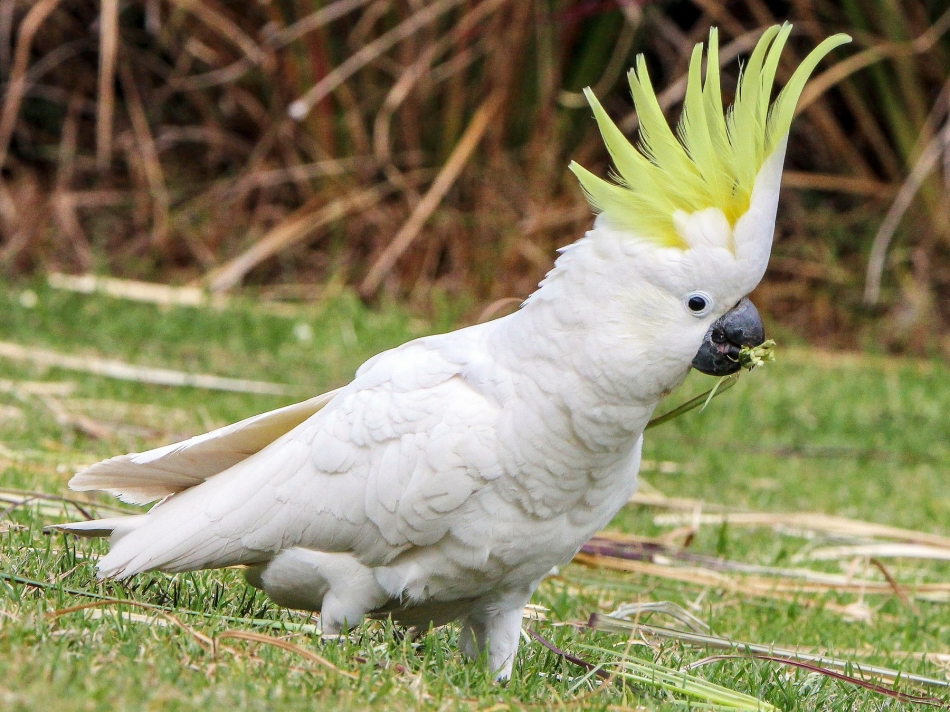
Cockatoo: About the style, cockatoos are attention-grabbing and attention-loving animals. The cockatoos are quick to bond with their owners and drive on their relationships. In fact If they don’t receive enough attention they can become depressed and begin plucking out their feathers as a sign of distress. But as long as these birds are getting love from at least an hour or so a day they will become a member of the family in no time. Physical characteristics: Primarily white plumage, pale yellow on wings and tails, large white crest, black beak(umbrella cockatoo).
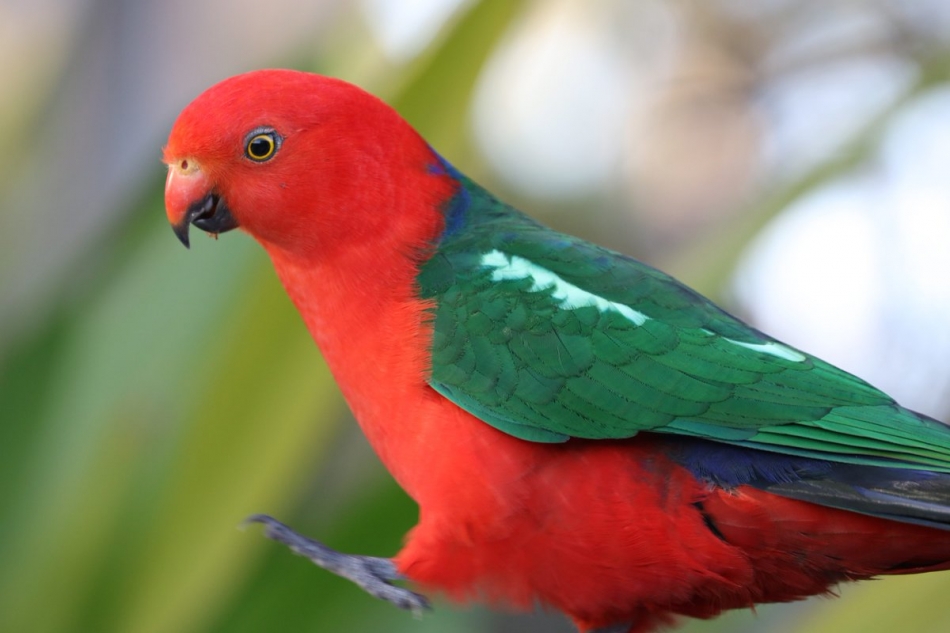
Australian King Parrot: The Australian king parrot is kept as a pet because of its look, not because it is affectionate or likes handling. Males are bright red with green wings and black tails. Females look quite different. They are green with a red belly and legs. One problem with keeping them as pets is that they need a large space in which to roam around. They aren’t happy with small cages and need handlers that know how to give them the space they need.

Black Palm Cockatoo: The black palm cockatoo is one of the largest species of cockatoo. They are dark grey to black with maroon cheeks. They also have a feathered crest on their heads that looks like palm fronds, giving them their name. Those that are kept as pets are described as very needy. They are social and intelligent and will grow depressed and destructive if they don’t receive the care and interaction they need. Although they were once common, they are now considered vulnerable in the wild. Habitat destruction and capture for the pet trade have led to a sharp decrease in their numbers.
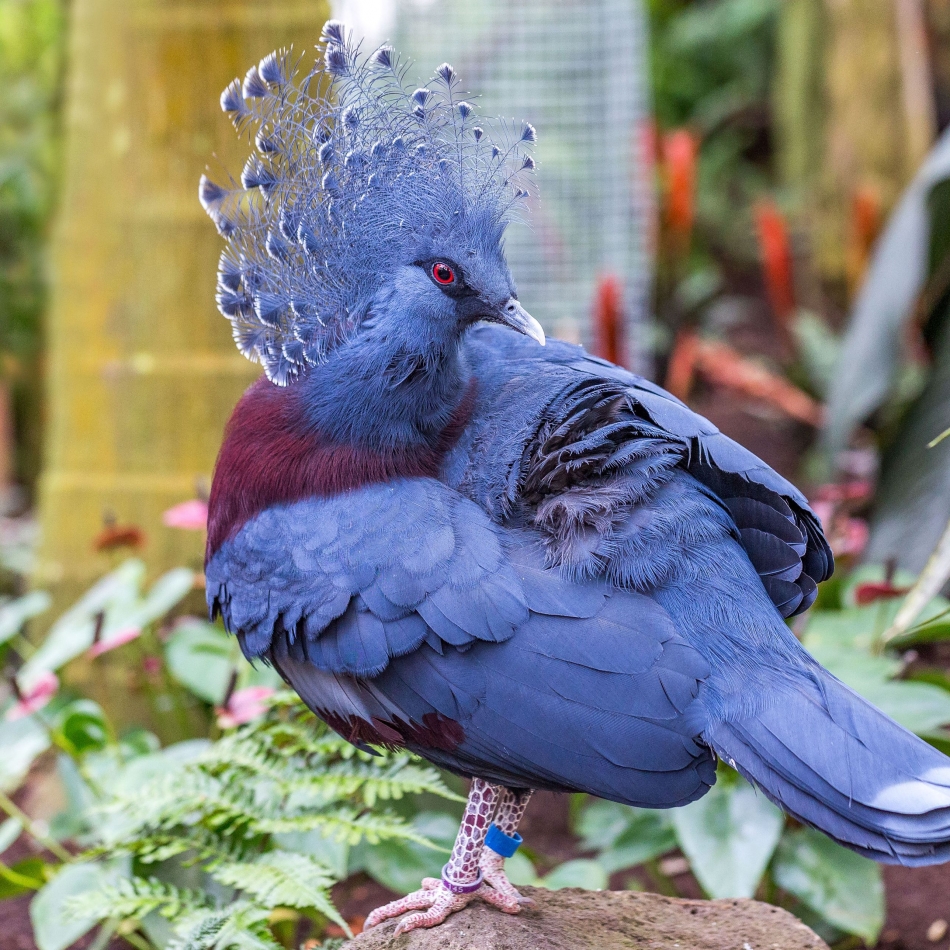
Victoria Crowned Pigeon: The Victoria crowned pigeon was named to honor Queen Victoria. These majestic birds have a plume of lacey blue feathers on their heads. They are very large and can weigh up to 7 pounds. The feathers on their bodies are light blue with maroon on the chest. They are the largest species of pigeon in the world. They spend most of their time on the ground and need a significant amount of space to run around. They also need places to perch. It’s highly unlikely they can find what they need in your home so they are best left to zoos where they can be properly cared for.
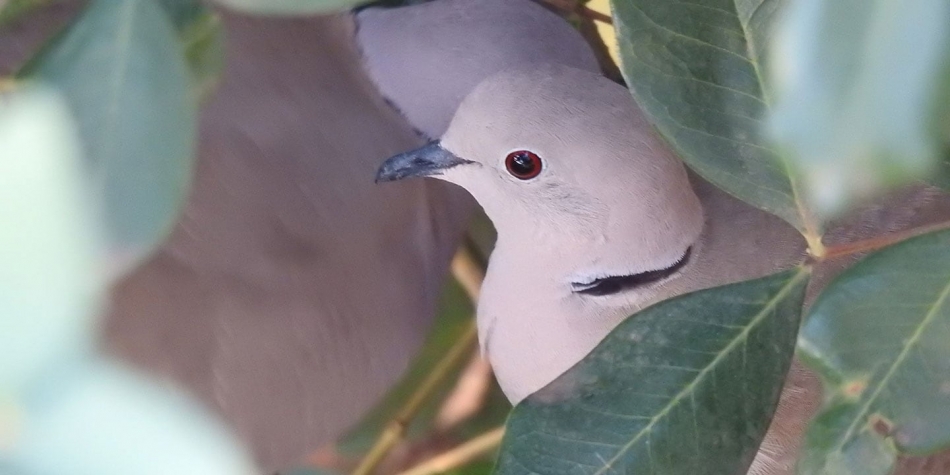
Ring-Necked Doves: No, they’re not common pet birds—in fact, only 3 percent of bird parents keep doves. But they should be more popular. Docile and easygoing, doves love hanging out with their humans once they get used to them. Although some species are not well suited as pets, requiring advanced management with large and precise environments, other dove species are very well suited as companion pets. Ring-necked doves (Streptopelia risoria) and diamond doves (Geopelia cuneata) are two of the most widely kept species of doves. They’re perfect for people who want to keep birds as pets but don’t want to (or can’t) invest the time it takes to care for a parrot. Housing: They need a wide cage with several perches, bells and swings.

Blue Waxbill (Uraeginthus angolensis): The blue waxbill (Uraeginthus angolensis), also called southern blue waxbill, blue-breasted waxbill, southern cordon-bleu, blue-cheeked cordon-bleu, blue-breasted cordon-bleu and Angola cordon-bleu, is a common species of estrildid finch found in Southern Africa. It is also relatively commonly kept as an aviary bird. The blue waxbill mainly eats grass seeds, which are taken from the inflorescences. This is supplemented with termites and other insects. They have also been recorded eating the fallen fruits of Boscia albitrunca. They are normally seen in pairs or family parties, but do form larger flocks which often mix in with flocks of other estrildid finches.
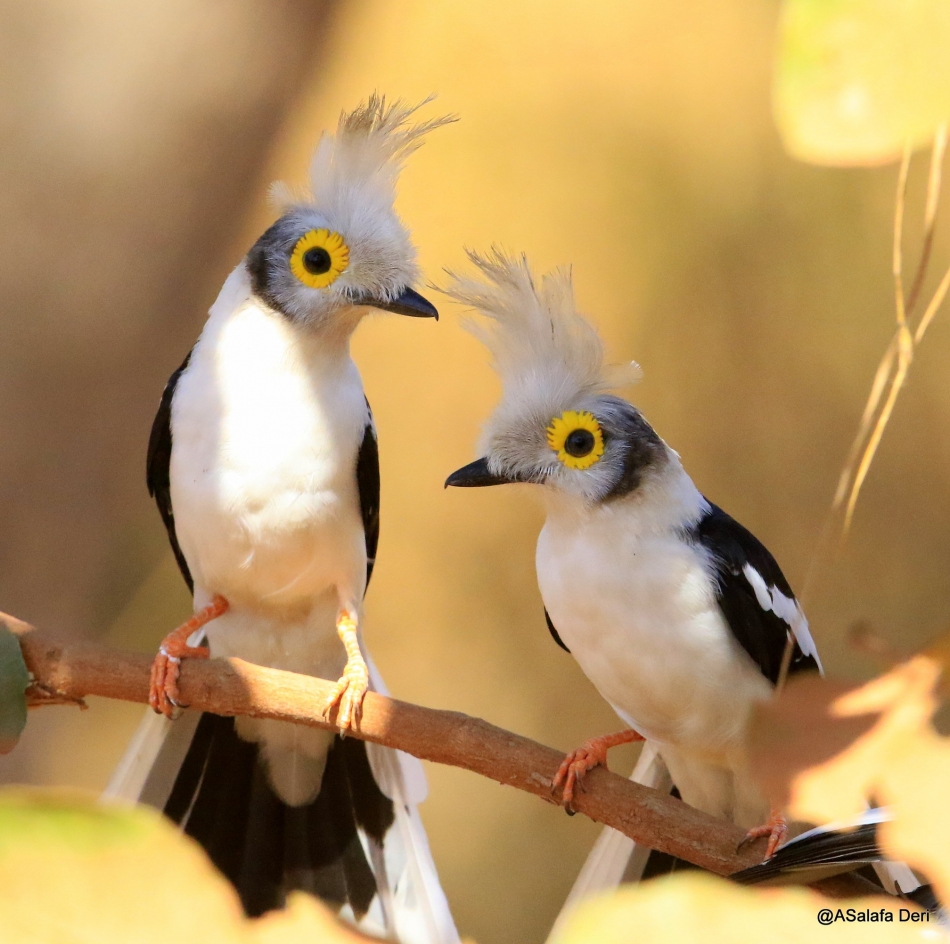
White-crested Helmetshrike (Prionops plumatus): The white-crested helmetshrike (Prionops plumatus), also known as the white helmetshrike, is a species of passerine bird in the Vanga family Vangidae, formerly usually included in the Malaconotidae. It is found in Angola, Benin, Botswana, Burkina Faso, Burundi, Cameroon, Central African Republic, Chad, Democratic Republic of the Congo, Ivory Coast, Eritrea, Eswatini, Ethiopia, Gambia, Ghana, Guinea, Guinea-Bissau, Kenya, Malawi, Mali, Mauritania, Mozambique, Namibia, Niger, Nigeria, Rwanda, Senegal, Sierra Leone, Somalia, South Africa, Sudan, Tanzania, Togo, Uganda, Zambia, and Zimbabwe. Its natural habitats are subtropical or tropical dry forests, dry savanna, moist savanna, and subtropical or tropical dry shrubland. It is a gregarious bird and is found in small, active parties that are always on the move as they forage among the foliage or on the ground. They chatter noisily to one another as they move through their territory. Watch video here: https://www.youtube.com/embed/MZIQAxWQB8M
thenewsday
